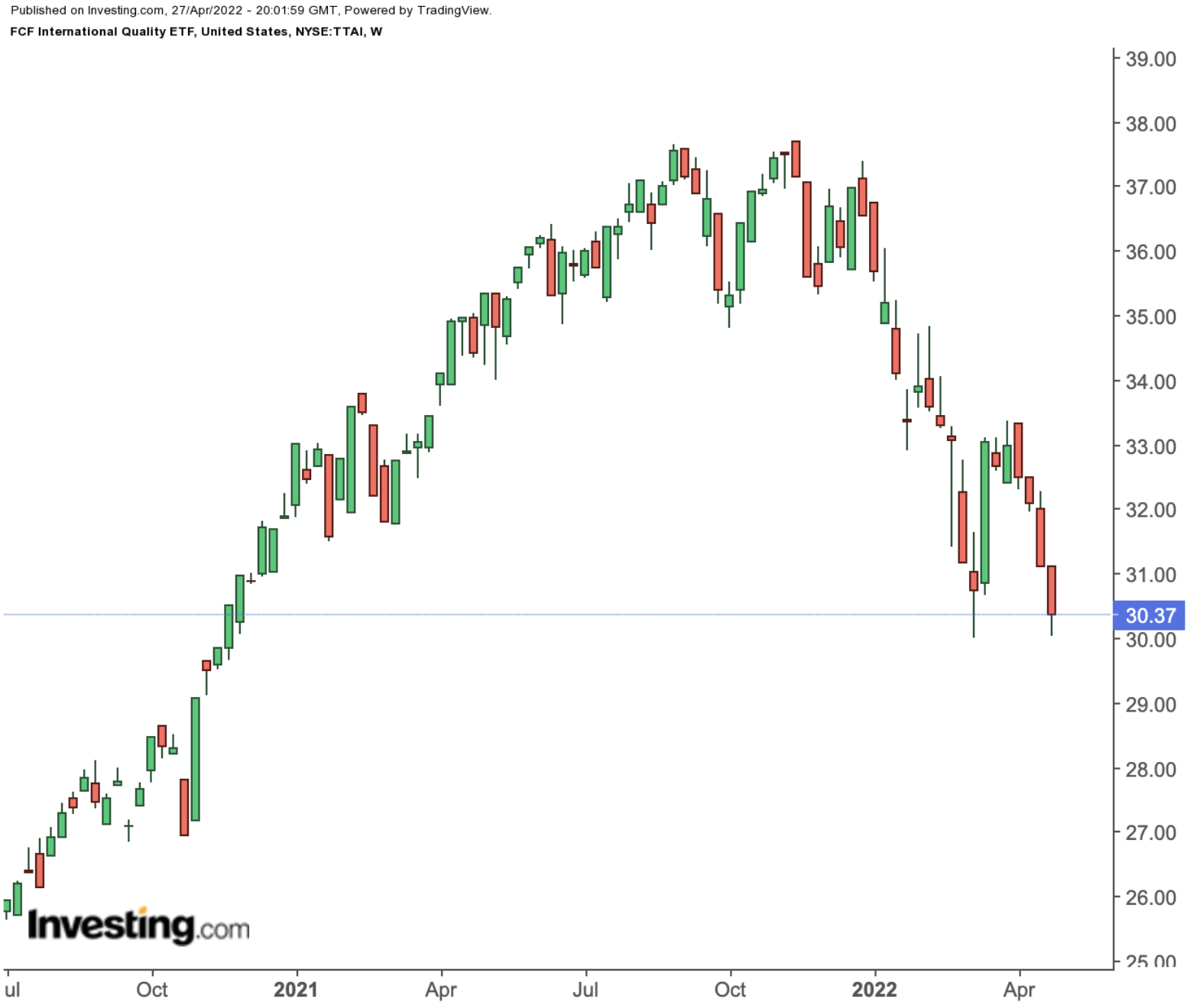Despite Wall Street’s ongoing bearish sentiment, new exchange-traded funds (ETF) have continued to reach the market in impressive numbers in 2022. ETFs listed in the US currently have more than $5.5 trillion under management. Globally, there are over 8,500 such funds.
Recent research by Brown Brothers Harriman further suggests:
“Active strategies represented about 10% of global net inflows in 2021, driven mostly by U.S. investors.”
Alpha And Beta
Potential ETF investors are likely to note two terms, namely, ‘alpha’ and ‘beta,’ as they research funds that could be appropriate for their portfolio objectives.
Many of our readers would know the beta (β) of an asset is a measure of the volatility of its returns in relation to the broad market. The scale starts at 1; thus, a fund with a beta of 1.3 would be 30% more volatile than the market.
For example, if the S&P 500 index rises 10%, an asset with a beta of 1.3 is expected to rise by 13%. However, a fund’s beta does not indicate its strengths or weaknesses.
For instance, academic research highlights that:
“High-beta stocks should earn higher average returns than low-beta is the cornerstone of modern finance. Empirical evidence […] does not support this prediction.”
Therefore, the beta of an asset is only one of the many tools when investors analyze funds or stocks.
The next concept we want to discuss briefly is alpha (α), or the measure of the performance of an investment compared to a benchmark index, such as the S&P 500. If, for example, a fund returned 20% in a year when the S&P 500 rose only 10%, that fund has a higher alpha or excess return.
Many investors are now looking for ETFs with higher alphas, given the uncertainty about broader market behavior for the rest of the year.
There are currently hundreds of alpha-seeking ETFs stateside. Alpha values can help rank the performance of such actively managed funds. However, we should remind readers that both alpha and beta values are historical and do not imply future performance and returns.
Today’s article introduces a fund that could appeal to potential investors looking for excess returns outside the US.
FCF International Quality ETF
- Current Price: $30.21
- 52-week range: $30.01 - $37.71
- Dividend yield: 1.4%
- Expense ratio: 0.61% per year
The FCF International Quality ETF (NYSE:TTAI) is an actively managed fund that provides broad exposure to international equities. Fund managers focus on companies with strong free cash flows and seek to exceed the total return of the S&P Developed Ex-U.S. BMI NTR Index. Environmental, social, and corporate governance (ESG) criteria are also important for stock selection.

TTAI, which started trading in June 2017, currently has 136 stocks. The top 10 holdings comprise roughly 17% of $58.3 million in net assets.
Sub-sectoral exposure includes industrials (21.5%), financials (14.1%), information technology (13.4%) and consumer discretionary (11.3%), among others. Over 10% of the companies come from the UK. Next in line are those from Switzerland (9.7%), Japan (8.7%), Canada (8.5%), Australia (7.7%), and China (6.1%)
Global healthcare names, such as Denmark-based Novo Nordisk (CSE:NOVOb) (NYSE:NVO) and Swiss Roche Holding (SIX:ROG) (OTC:RHHBY); Royal Bank of Canada (NYSE:RY); Netherlands-headquartered ASML Holding (AS:ASML) (NASDAQ:ASML); and information and analytics provider Relx (NYSE:RELX) are among the top stocks on the roster.
TTAI is down more than 16.8% since January and 13% over the past 12 months. Yet, since inception, the annualized return has been over 7%.
We also believe that companies that constantly generate high free cash flows deserve investors’ attention. This crucial metric gives an important insight into the health of a company and whether it has available cash that can be used to create shareholder value. Therefore, despite the recent decline in the ETF, it could potentially belong in many retail portfolios.
Finally, those investors looking for a comparable ETF that focuses on US stocks with strong FCF may want to research the FCF US Quality ETF (NYSE:TTAC). The fund has declined 11.3% since January and 6.1% over the past year.
